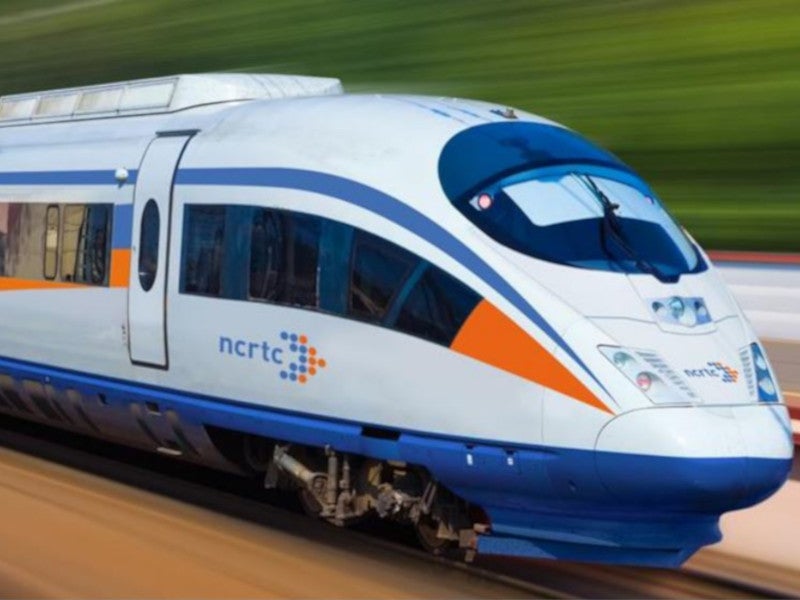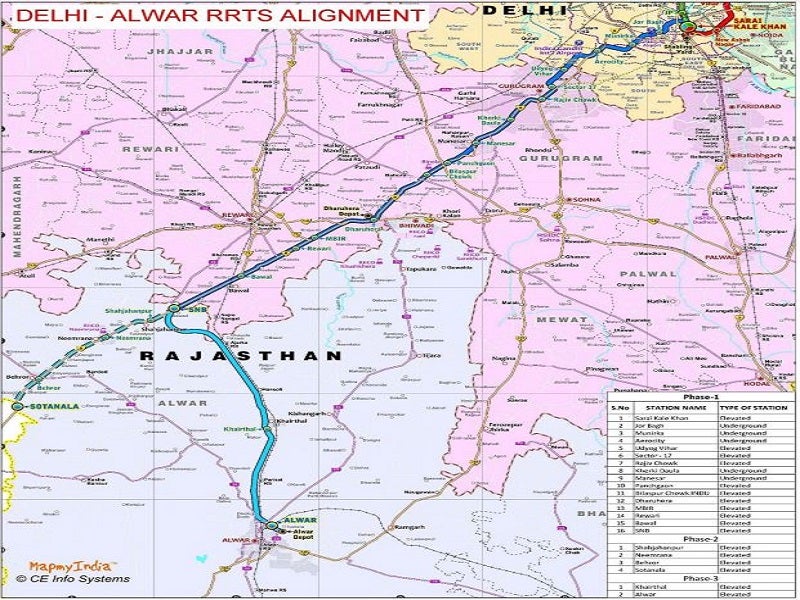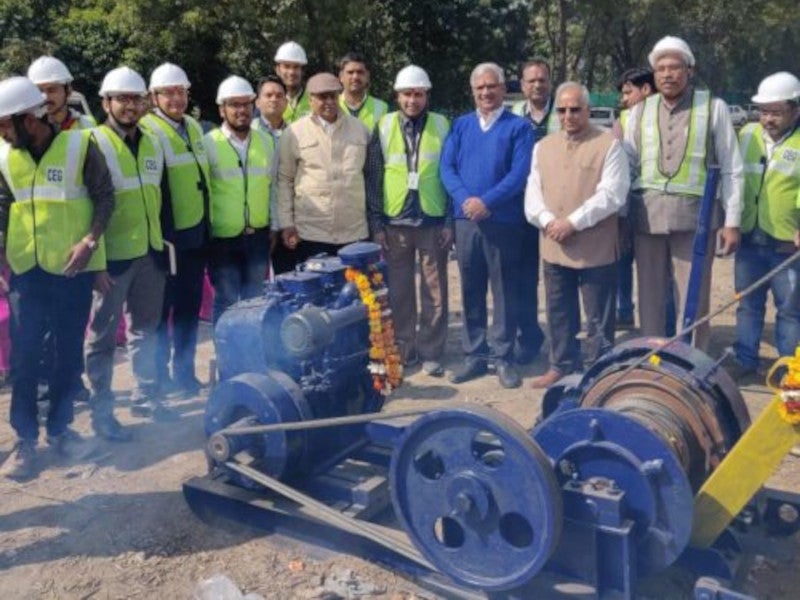The Delhi-Gurugram-Shahjahanpur-Neemrana-Behror (SNB)-Alwar corridor is one of the three corridors being developed under the regional rapid transit system (RRTS) Phase I to improve connectivity to industrial and urban areas in the national capital region (NCR) of India.
The 164km-long Delhi-Gurugram-SNB-Alwar RRTS line will connect Munirka, Aerocity in Delhi, to Alwar in Rajasthan through Gurugram, Sotanala and Rewari. The line will pass through 22 main line stations, including 17 elevated and five underground, originating from Sarai Kale Khan (SSK) in Delhi.
The Delhi-Gurugram-SNB corridor of the line was shortlisted for the PM Gati Shakti masterplan by the Network Planning Group (NPG) of the Union Commerce and Industry Ministry in February 2023 to improve urban connectivity and support manufacturing.
The Delhi-Alwar project will have a major impact on regional development by enabling rapid and reliable links between Delhi, Gurugram, SNB, and Alwar. It is also expected to minimise traffic congestion on roadways, decreasing air pollution and improving the overall quality of life in the region.
Development details of the Delhi-Gurugram-SNB-Alwar corridor
The Government of India’s Planning Commission established a task force in 2005, chaired by the Secretary of the Ministry of Urban Development (MoUD), to devise a multi-modal transit system for the Delhi NCR. The initiative was integrated into the Integrated Transport Plan for NCR 2032, with particular emphasis placed on the RRTS linking regional centres.
The task force identified eight corridors and prioritised three of them, namely Delhi-Meerut, Delhi-Panipat, and Delhi-Alwar, for immediate implementation under Phase I.
In March 2010, the National Capital Region Planning Board (NCRPB) commissioned M/s. Delhi Integrated Multi-Modal Transit System for Delhi-Meerut and Delhi-Panipat, and M/s. Urban Mass Transit Company for Delhi-Alwar, to conduct feasibility studies and prepare detailed project reports (DPRs).
The DPR for the Delhi-Alwar RRTS line was approved by the National Capital Region Transport Corporation (NCRTC) board in December 2018 and by the state governments of Haryana and Rajasthan in 2019. NCRTC is responsible for designing, building, financing, operating, and maintaining the RRTS project.
The RRTS project will be developed in multiple phases, of which Phase I includes three stages. The Delhi-Gurugram-SNB-Alwar corridor is being developed in the first stage, to be followed by the Delhi-Ghaziabad-Meerut and Delhi-Panipat corridors.
The pre-construction works include road widening, shifting of utilities, initial pile load tests, and topographical surveys in Gurugram and other places.
RRTS commuter service details
RRTS offers a new, dedicated commuter service with high speed, high capacity, and enhanced comfort, linking regional nodes within the NCR. The electrified double line will adopt a broad gauge (1,676mm).
The corridor will be equipped with a 25kV AC single-phase 50Hz overhead catenary traction system.
RRTS trains run every five to ten minutes during peak hours. The trains will accommodate up to 1,000 passengers and have modern features such as Wi-Fi, CCTV cameras, and comfortable seats.
Rolling stock for Delhi-Gurugram-SNB-Alwar RRTS
Lightweight, air-conditioned, stainless steel coaches, with a length of 24m and a width of 3.66m, will be used in the corridor.
Six-car trainsets are expected to run on the line until 2030, with plans to run nine-car trains from 2031. Each car will have three doors on either side.
The trains are expected to have a design speed of 180km/h and a maximum operational speed of 160km/h. Each train is expected to include coaches for ladies and business-class passengers. It will have space to accommodate wheelchairs for passengers with disabilities.
The maximum passenger capacity of each car is expected to be 428, including 328 seated passengers. The average speed of the trains will be 100km/h.
Signalling and train control systems of the RRTS
A continuous automatic train control (CATC) system is proposed to be used for signalling and train control on the RRTS. It will comprise automatic train protection (ATP), automatic train operation (ATO), and automatic train supervision (ATS) systems.
Communications and fare collection solutions
The Delhi-Gurugram-SNB-Alwar corridor will be installed with terrestrial trunked radio (TETRA) and optical fibre cables (OFC) for the telecommunication and passenger information system.
It will use a computer-based automatic fare collection (AFC) system and a contactless smart token/card-type ticketing system.
Sustainability features of the RRTS
The RRTS meets most of its energy needs from renewable sources, incorporating solar panels at depots and station buildings. Its implementation is integral to the Comprehensive Action Plan for Air Pollution Control in Delhi & NCR and aligns with the recommendations of the High-Powered Committee on Decongesting Traffic in Delhi.
The innovative transit system, characterised by its small environmental footprint and high capacity, promises to substantially reduce pollution in the region.
Financing of the RRTS project
The total estimated investment in the Delhi-Gurugram-SNB-Alwar RRTS project is Rs379,870m ($4bn), with a contribution from the Government of the National Capital Territory of Delhi (GNCTD) of Rs32,610m under consideration for Indian government sanction.
The Indian Government is funding 20% of the project cost while the respective state governments are funding 20%. The remaining 60% is provided by bilateral and multilateral agencies.
Benefits of Delhi-Gurugram-SNB-Alwar RRTS
The Delhi-Alwar RRTS is expected to reduce road congestion in Gurugram, Sotanala, Rewari, Shajahanpur and Neemrana. It is also expected to reduce pollution and road accidents, as well as encourage the use of public transport.
The travel time between SKK and SNB is expected to be reduced from four hours to less than 70 minutes, upon completion of the project.
The travel time between Rajiv Chowk and the Indira Gandhi International (IGI) airport is estimated to be ten minutes while travellers from Manesar will be able to reach the IGI airport in approximately 20 minutes.
The RRTS will be integrated with other transport systems such as Delhi Metro stations, inter-state bus terminals, airports, and Indian Railways to provide seamless connectivity.
Contractors involved
Larsen and Turbo (L&T) was selected as the detailed design consultant for architectural, electrical, and mechanical work for Udyog Vihar, Sector 17, and Rajeev Chowk stations and elevated viaducts between IDPL Complex and Rajiv Chowk Ramp.
Agarwal Power, Vishal Enterprises, KV Prateek Enterprises, and Galaxy Concab were chosen for shifting and modifying electrical distribution lines along the corridor.
Aquarian Enterprises, a local company, received the contract for shifting and modifying extra-high-voltage (EHV) lines of Haryana Vidyut Prasaran Nigam (HVPNL).
Urban Mass Transit Company (UMTC), an urban transport consultancy firm based in India, was selected to conduct a feasibility study and prepare the DPR.
A consortium of URS Scott Wilson India and Consulting Engineers Group was contracted to provide consultancy services to perform the feasibility study for the project.
A joint venture (JV) between Systra MVA Consulting (India) and AECOM India, part of AECOM, received a contract to provide detailed design consulting for civil, architectural, electrical and mechanical works for seven elevated stations.
Unitech Engineers, Vikas Geotechnical, RITES, CEG Test House and Research Centre, and Shree Balaji Test House were appointed to undertake geotechnical investigations.
SS Solutions was engaged to perform location surveys, topographic surveys, and other miscellaneous survey work for the section between SKK and SNB.
The Central Road Research Institute (CSIR-CRRI) was responsible for assessing the impact of the project’s noise and vibration on the surroundings.
Other RRTS rail corridors in the NCR
The Delhi-Gurugram-SNB-Alwar corridor is one of the eight corridors proposed by the NCRPB to connect urban, industrial, regional, and sub-regional areas in the NCR through a rail-based RRTS.
The remaining upcoming corridors include Delhi-Ghaziabad-Meerut, Delhi-Sonipat-Panipat, Delhi-Faridabad-Ballabhgarh-Palwal, Delhi-Shahadra-Baraut, Delhi-Bahadurgarh-Rohtak, Ghaziabad-Hapur, and Ghaziabad-Khurja.





